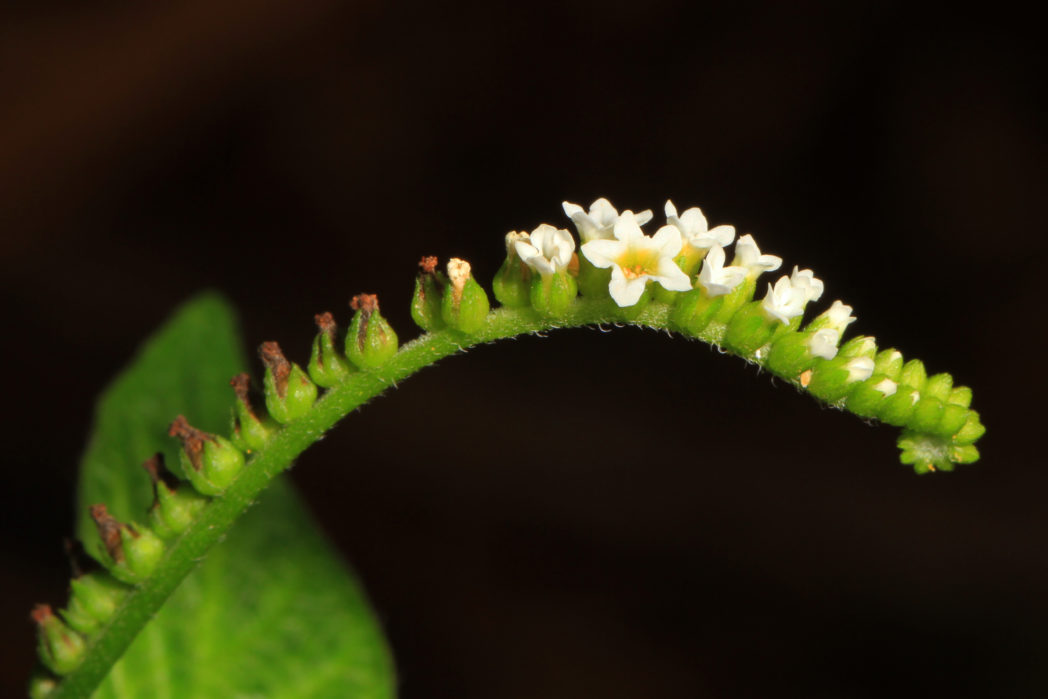Scorpionstail
Pictured above: Scorpionstail (Heliotropium angiospermum) by Judy Gallagher (CC BY 2.0). Click on terms for botanical definitions. View post as a PDF.
Scorpionstail (Heliotropium angiospermum) is a perennial shrub-like plant with unique white flowers that bloom year-round. Its nectar attracts a variety of butterflies including the Miami blue (Hemiargus thomasi) and Schaus’ swallowtail (Heraclides aristodemus). The plant occurs naturally in coastal hammocks and strands, and ruderal or disturbed areas.
Flowers are small, white and borne singly or in pairs along one side of a curved or coiled terminal spike. Corollas and calyces are each 5-lobed. Leaves are lanceolate to elliptic with deeply veined surfaces, pubescent undersides and entire margins. They are stalked and alternately arranged. Stems are branched and may be woody or herbaceous. Fruit is a scaly schizocarp.
The genus name Heliotropium comes from the Greek helios, or “sun,” and trepein, or “to turn.” It refers to the belief that the plants turn their flowers toward the sun. The common name refers to the helicoid flower spikes that are reminiscent of a scorpion’s coiled tail.
Family: Boraginaceae (Borage or forget-me-not family)
Native range: Coastal counties from Pinellas and Volusia south to Monroe and the Keys, and Hendry County
To see where natural populations of Scorpionstail have been vouchered, visit florida.plantatlas.usf.edu.
Hardiness: 9B–11
Lifespan: Perennial
Soil: Well-drained, moist to moderately dry sandy or calcareous soils
Exposure: Full sun to partial shade
Growth habit: 1–3′ tall and equally wide
Propagation: Seed, cuttings
Garden tips: Scorpionstail is a fast-growing plant that may require annual pruning to maintain. It is relatively short-lived, so replacement is necessary every few years. It is moderately drought- and salt-tolerant. The plant is a prolific self-seeder. Flowers are tiny but abundant.
Scorpionstail plants are occasionally available from nurseries that specialize in Florida native plants. Visit www.plantrealflorida.org to find a nursery in your area.
For more information on other Heliotropium species, see:

